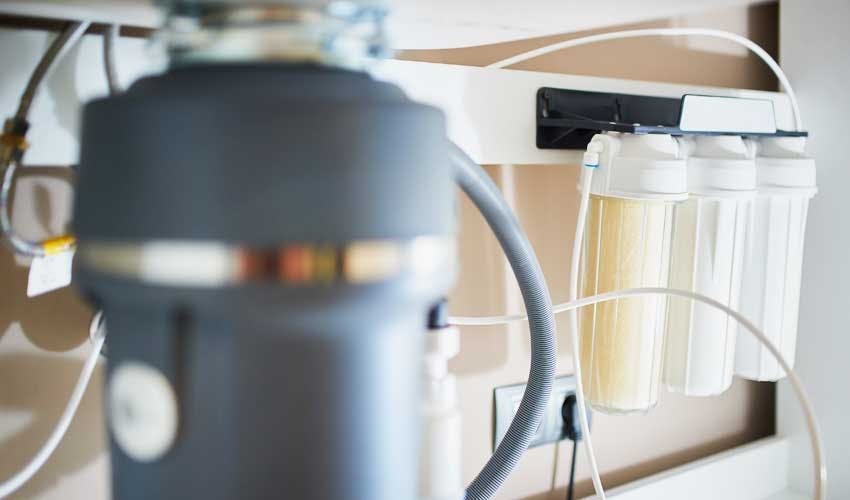It is essential to filter water at the point of consumption using tools like water filter pitchers since heavy metal pollution in drinking water poses serious health risks.
Water filter pitchers can effectively remove heavy metals using activated carbon, ion exchange resins, or nanofiltration. Some water filter pitchers use these methods to remove heavy metals, including arsenic, lead, zinc, and copper.

How Do The Heavy Metals Function?
Heavy metals are metallic chemical elements with a high atomic weight and density found in nature.
But since they are used for a wide range of industrial, residential, medical, agricultural, and technical purposes and are so widely disseminated in the environment, there are concerns about their possible adverse effects on the environment and our health.
Some of the more common heavy metals are:
- Arsenic
- Cadmium
- Chromium
- Cobalt
- Copper
- Lead
- Nickel
- Selenium
Lead, mercury, cadmium, chromium, and arsenic are poisonous to individuals and the environment.

The Influences of Heavy Metal Toxicity
The following elements influence how toxic heavy metals are:
- Age
- Genetics
- Dosage at which you were exposed to chemicals

How a Water Filter Pitcher Removes Heavy Metals
Using water filter pitchers with nanofiltration, carbon filtration, or ion exchange, heavy metals can be successfully removed from water (unless at excessive concentrations – such as those related to an industrial accident or spill).

Nanofiltration
The pore size of a nano filter, which lies halfway between reverse osmosis and ultrafiltration, is between 0.0002 and 0.002 microns. As heavy metals are added to water that has already been cleansed, the microfilter captures them.
Nanofiltration has a high rejection rate for heavy metals, including 99.7% for chromium, 98.4% for copper, 97.2% for nickel, and 97.9% for zinc, according to a study.

Carbon Filtration
Activated carbon filters use the adsorption process to remove water contaminants. Adsorption is one of the most effective and affordable ways to remove heavy metals from water. Activated carbon is an adsorbent for the heavy metal molecules, leaving the water clear.
Until the carbon filter is changed, the metals accumulate on the carbon's surface and stay there. This strategy gives excellent operational and design flexibility while being ecologically benign.

Transfer of Ions
Ion exchange methods are used more frequently to remove heavy metals from water.
Ion exchange can eliminate common water impurities like arsenic, mercury, chromium, zinc, lead, copper, and nickel.
FAQs

How Do Heavy Metals Enter Our Water Supply?
Heavy metals have the potential to harm both our surface water and groundwater. These contaminants can locate and stay in the soil through precipitation or ion exchange. In contrast to organic pollutants, heavy metals do not decompose. Therefore, they present a unique set of cleanup challenges.
According to the EPA, heavy metals frequently enter our drinking water supply from:
- Mining operations
- Plumbing in the home
- Mineral deposits for the electronics industry
- Crude oil refineries and cement factories
- Governmental waste management

Heavy Metals' Harmful Effects on the Environment
Heavy metals have some negative impacts, including corrosion, the creation of acid rain, the ruin of infrastructure, and eutrophication.

What Impact Do Heavy Metals Have on Health?
In the body, heavy metals typically bioaccumulate. The process of bioaccumulation occurs when an organism absorbs a chemical more quickly than it is eliminated from the body.
Long-term exposure to heavy metals can cause heavy metal poisoning because they can interfere with the body's normal functions.
Both acute and chronic poisoning can arise from consuming water contaminated with heavy metals. Heavy metals that can be harmful include lead, mercury, arsenic, cadmium, and chromium.
According to the WHO, certain heavy metals have varied impacts on the body.
Lead exposure can raise blood pressure in adults, but it also negatively affects a child's, baby's, or fetus's neurobehavioural and developmental processes.
Cadmium
Intake of cadmium can harm kidneys and bones. The majority of scientists concur that it has the potential to be lung cancer-causing and human carcinogenic.
Mercury
Because of its high toxicity, mercury can cause damage to the immune system, liver, brain, kidneys, and immunological system, and kidneys.
Arsenic
Arsenic-contaminated water increases the risk of skin cancer, discolouration, and blisters.
Chromium
Oral exposure to chromium can cause hematological toxicity, DNA damage, gene mutation, and carcinogenicity. Heavy metals harm the body's cellular activities, including growth, differentiation, apoptosis, proliferation, and repair.

Conclusion
Use water filter pitchers to eliminate heavy metals from your water source. You can get rid of dangerous impurities like lead, copper, and mercury from your water by using a water filter pitcher. Using a water filter pitcher is a cheap and simple approach to guarantee that you and your loved ones have access to clean, safe water.
Ecobud's company vision is to focus on health and the environment. Purchase Water Filter products with us today!